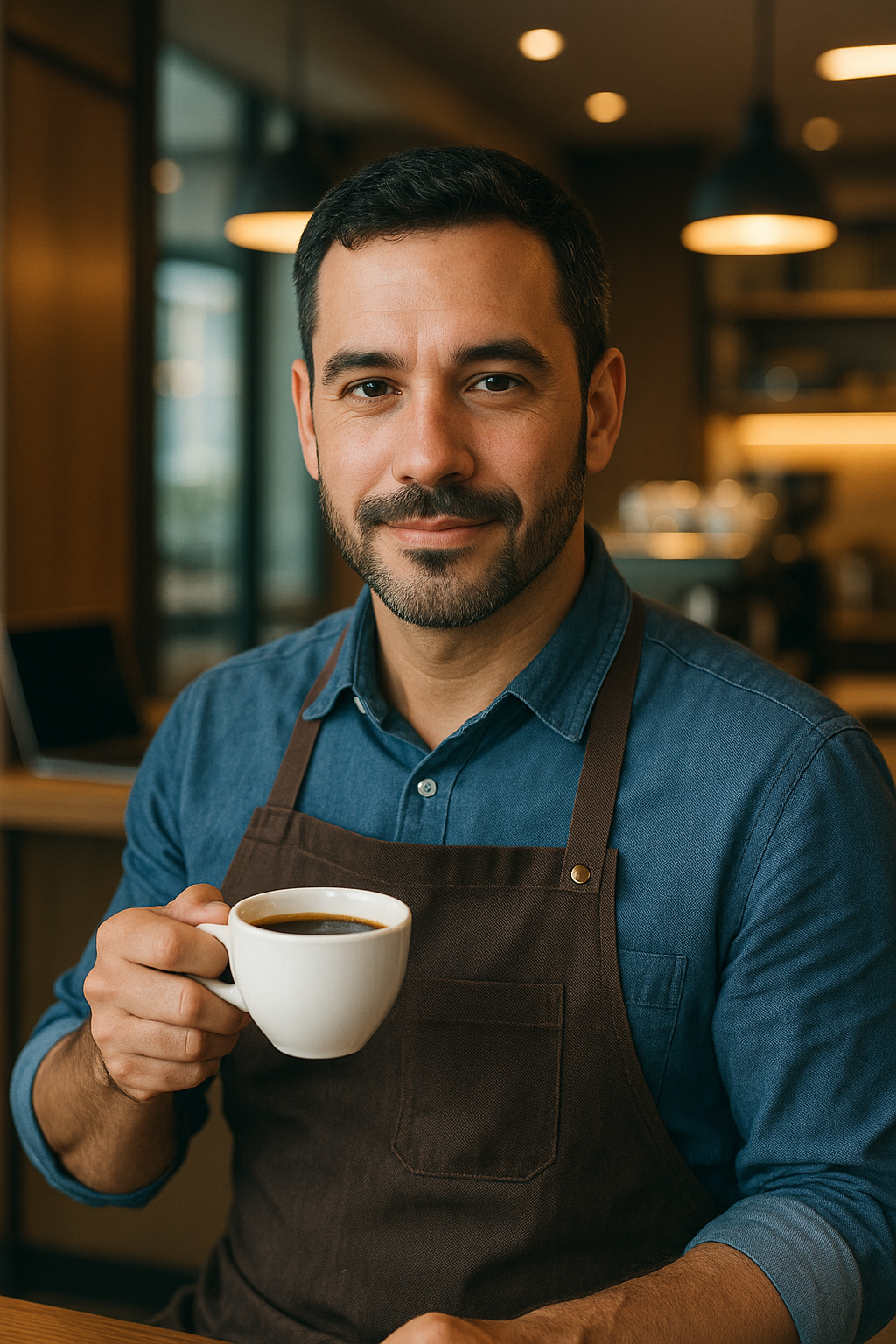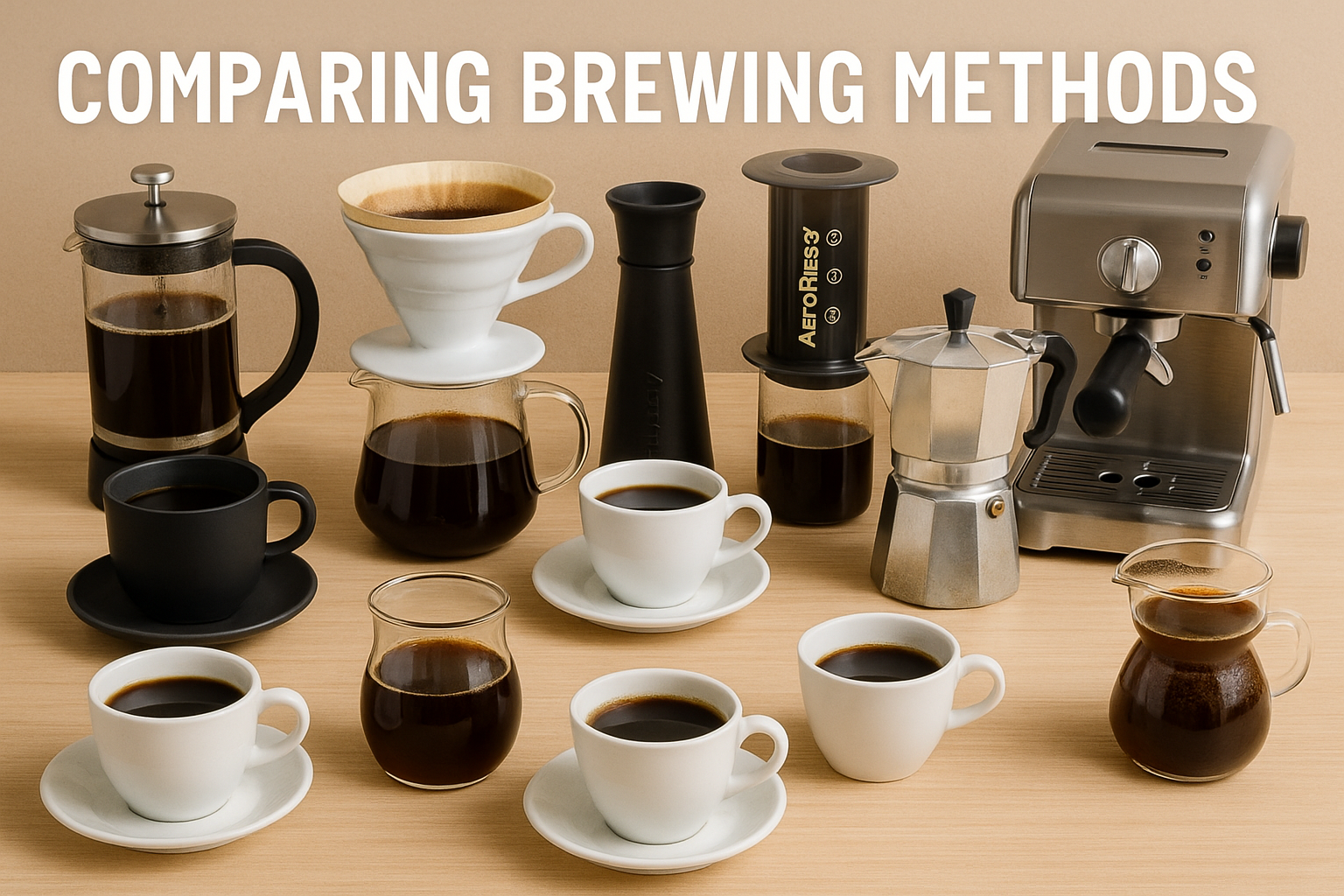There are countless ways to brew coffee, and each method brings out different characteristics of the beans.
From the bold and oily French Press to the clean and delicate Chemex, every brewing style is a unique combination of flavor profile, body, clarity, and convenience.
But with so many options—drip machines, pour-overs, espresso, AeroPress, siphon brewers, moka pots, and more—how do you know which one is right for you?
In this comprehensive guide, we’ll compare the most popular coffee brewing methods based on key factors: flavor, ease of use, cost, clean-up, and ideal use cases.
Whether you’re a beginner or a seasoned enthusiast, this guide will help you make smarter decisions about your next coffee tool—or how to get the best from the one you already have.
Why Brewing Method Matters
Coffee is more than just ground beans and hot water—it’s an extraction process. The brewing method controls:
- Contact time (how long the water touches the grounds)
- Pressure (which can enhance strength and body)
- Filtration (affects clarity and oils)
- Grind size requirements
- Flavor expression (some methods highlight acidity, others sweetness or bitterness)
Changing the method, even with the same beans, can yield drastically different flavors.
Side-by-Side Comparison of Brewing Methods
| Method | Body | Clarity | Acidity | Brew Time | Difficulty | Ideal For |
|---|---|---|---|---|---|---|
| French Press | Full | Low | Medium | 4–5 mins | Easy | Bold lovers, beginners |
| Pour Over | Light-Medium | High | High | 3–4 mins | Medium | Floral, bright flavor fans |
| Chemex | Light | Very High | High | 4–5 mins | Moderate | Clean, complex cup seekers |
| AeroPress | Medium | Medium | Medium | 1–2 mins | Easy | Versatility and portability |
| Espresso | Full | Medium | Medium | ~30 sec | Advanced | Intensity, milk drinks |
| Moka Pot | Medium-Full | Low | Low | 4–7 mins | Medium | Strong, stove-top espresso |
| Drip Machine | Medium | Medium | Medium | 4–6 mins | Easy | Convenience, batch brewing |
| Cold Brew | Smooth | Medium | Low | 12–24 hrs | Easy | Low-acid, iced coffee fans |
| Siphon | Medium | High | High | 6–8 mins | Advanced | Brewing theater, complexity |
In-Depth Breakdown of Each Method
1. French Press
- Flavor: Full-bodied, heavy, slightly gritty if not filtered well.
- Grind Size: Coarse
- Filter: Metal mesh (no paper)
- Pros:
- Simple and inexpensive
- No disposable filters
- Great for bold coffees
- Cons:
- Sediment in cup
- Harder to clean
- Best For: People who like rich, textured coffee with minimal fuss.
2. Pour Over (V60, Kalita, etc.)
- Flavor: Bright, clean, complex
- Grind Size: Medium-fine
- Filter: Paper or metal
- Pros:
- Full control over pour rate and time
- Reveals flavor nuances in beans
- Cons:
- Requires focus and skill
- Not ideal for big batches
- Best For: Coffee drinkers who want clarity, lightness, and subtlety.
3. Chemex
- Flavor: Exceptionally clean and aromatic
- Grind Size: Medium-coarse
- Filter: Thick Chemex paper
- Pros:
- Stylish design
- Brews large volumes cleanly
- Cons:
- Longer drawdown time
- Special filters required
- Best For: Those who love elegant coffee and entertaining guests.
4. AeroPress
- Flavor: Smooth and balanced
- Grind Size: Fine to medium
- Filter: Paper or metal
- Pros:
- Extremely portable
- Quick brew and easy cleanup
- Great for experimentation
- Cons:
- Single-cup focus
- Requires technique for consistency
- Best For: Travelers, students, and curious brewers.
5. Espresso
- Flavor: Intense, syrupy, and rich
- Grind Size: Very fine
- Filter: Portafilter basket
- Pros:
- Base for lattes, cappuccinos, etc.
- Instant results
- Cons:
- Expensive and steep learning curve
- Requires frequent maintenance
- Best For: Those serious about coffee and willing to invest time and money.
6. Moka Pot
- Flavor: Strong and robust, like espresso
- Grind Size: Fine-medium
- Filter: Metal
- Pros:
- Affordable and durable
- Brews a concentrated cup
- Cons:
- Prone to bitterness if over-extracted
- Less clarity than other methods
- Best For: Lovers of dark, rich coffee with an old-school touch.
7. Drip Machine
- Flavor: Standard, medium body
- Grind Size: Medium
- Filter: Paper
- Pros:
- Easy to use
- Set it and forget it
- Cons:
- Less control over variables
- Can result in flat flavor if not calibrated
- Best For: Casual drinkers or busy households.
8. Cold Brew
- Flavor: Smooth, chocolaty, low acidity
- Grind Size: Coarse
- Filter: Cloth or metal
- Pros:
- Excellent for iced coffee
- Stores well in fridge
- Cons:
- Takes a long time (12–24 hours)
- Requires planning ahead
- Best For: Iced coffee fans or those with acid sensitivity.
9. Siphon Brewer
- Flavor: Clean, aromatic, complex
- Grind Size: Medium
- Filter: Cloth or glass
- Pros:
- Stunning visual brewing process
- Produces tea-like coffee
- Cons:
- Expensive and fragile
- Requires precision and heat control
- Best For: Coffee nerds, showmanship, and exploring flavor complexity.
Which Method Is Right for You?
Ask yourself:
- Do you like strong or smooth coffee?
- Do you prioritize convenience or craft?
- Do you need to brew for one or a group?
- How much cleanup are you willing to do?
- What’s your budget and counter space?
Here’s a quick cheat sheet:
| If You Want… | Try This Method |
|---|---|
| Fast, no-fuss coffee | Drip machine or AeroPress |
| Full-bodied richness | French Press or Moka Pot |
| Clean and complex flavors | Chemex or V60 |
| Strong espresso-style brew | Espresso or Moka Pot |
| Cold and smooth iced coffee | Cold Brew |
| Theatrical and unique | Siphon Brewer |
Final Thoughts: Brew to Match Your Mood
No single method is better than the rest—it’s all about your taste, lifestyle, and brewing goals. You might love French Press on lazy weekends and rely on your drip machine on workdays. Or use a Chemex when guests visit and an AeroPress for your solo mornings.
The best part? You can experiment. Try a few methods, explore different beans, and keep notes on what works. Great coffee is a journey—and the brewing method is the road you choose to travel.

Marcelo Oliveira is a coffee enthusiast and content creator specializing in barista skills, brewing methods, equipment reviews, coffee-related health insights, and fascinating curiosities from the coffee world. With a deep passion for every step of the brewing process, he turns technical knowledge into accessible and engaging content for both beginners and seasoned coffee lovers. Marcelo’s goal is to help readers appreciate the full experience of coffee—from bean to cup.
